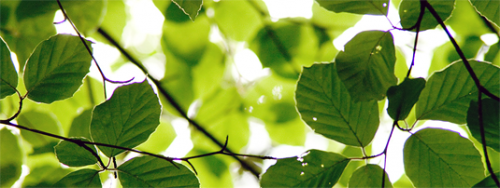Credit: Steve Ford / sxc.hu
(Phys.org) —LMU researchers have identified a novel protein that is required for the assembly of photosynthetic reaction centers. Moreover, their findings suggest that it evolved from a pre-existing factor that served a different function.
Life as we know it would be inconceivable without photosynthesis, as it supplies the oxygen and energy-rich chemical compounds that non-photosynthetic organisms like ourselves depend on. The energy required for these feats comes in the form of solar radiation, which is captured by so-called photosystems that are found in plants, algae and certain types of bacteria. Photosystems act as light collectors, and come in two different types, which are "tuned" to harvest light of different wavelengths.
The photosystems themselves are large molecular complexes made up of many different proteins, pigment molecules and other cofactors. "Correct assembly of such multiprotein complexes requires the action of so-called accessory proteins. These are factors that are essential for the construction of certain intermediates or subassemblies, but are not part of the mature, functional complex," says LMU biologist Professor Dario Leister.
Retooling the photosynthetic apparatus
Using thale cress (Arabidopsis thaliana) as a model system, Leister and his colleagues have identified a previously unknown assembly factor which they call PAM68L. In their latest study, they have shown that this protein is required for formation of the so-called NDH complex – a component of the photosynthetic apparatus that plays an important role in energy metabolism and also helps the plant to cope with certain kinds of stress.
"Interestingly, this protein shows considerable similarity to PAM68, which we identified as being necessary for the correct assembly of photosystem II in 2010," says Leister (hence the name: PAM68L stands for "PAM68-like"). The researchers infer from this that the PAM68 gene was duplicated in the course of the evolution of flowering plants. One copy retained the original function, leaving the PAM68L gene free to diverge from its ancestor. The latter was subsequently recruited to play a role in the assembly of the NDH complex. This scenario is supported by the fact that mosses and cyanobacteria, which are evolutionarily older than flowering plants and have a simpler NDH complex, also lack PAM68L. "Thus, to facilitate the assembly of their more intricate NDH complex, higher plants took advantage of pre-existing cell components, such as PAM68L, that had evolved novel capabilities equipping them for new tasks. This is a very interesting phenomenon in evolution," says Leister.
More information: Plant Cell, 2013.
Journal information: Plant Cell
Provided by Ludwig Maximilian University of Munich





















